begin quote from:
https://www.cnn.com/cnn-underscored/reviews/thule-approach-rooftop-tent?dicbo=v2-G48jzEZ&iid=ob_wildcard_photozone
Are rooftop tents worth it? We slept in one for 6 nights to find out
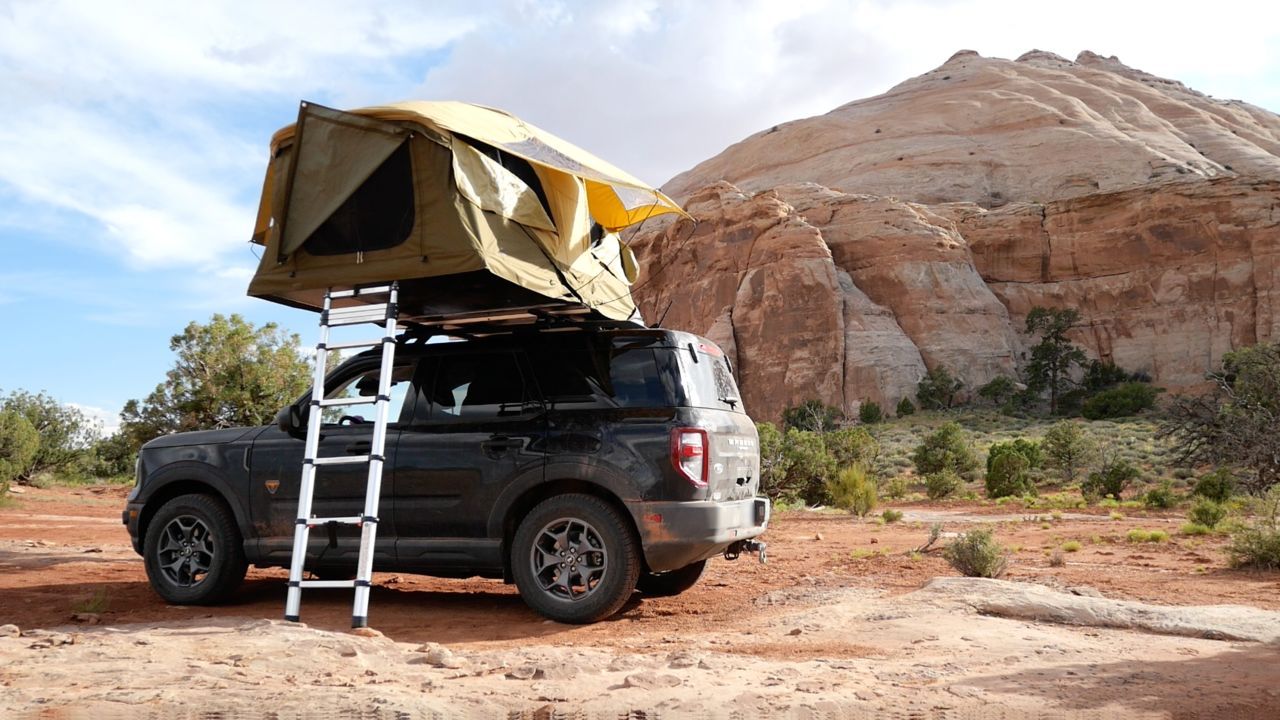
Whether you’ve been browsing camping gear online, watching overlanding videos or walking through your local REI, you’ve probably seen rooftop tents. Mounted on top of all types of Jeeps, trucks and SUVs, these elevated tents have exploded in popularity.
They promise a more comfortable sleep experience and ultimate convenience, however, with a price tag of thousands of dollars, it’s an obvious question to ask: Are rooftop tents worth it?
I’ve been getting into overlanding and wanted to find out if a rooftop tent is actually a better option than a traditional ground tent for all sorts of campers. So I mounted a Thule Approach M on top of my Bronco Sport, drove six hours from Boulder, Colorado, to Moab, Utah, and camped in the middle of the desert for six days to find out.
An amazingly comfortable soft-shell rooftop tent, this shelter has a thick mattress, rainfly and stargazing windows. It can be set up in about two minutes and taken down in nine. If you want a top-notch soft-shell tent, you’ll be more than happy with the spacious and cozy Thule Approach.
What is a rooftop tent?
Rooftop tents are a completely different beast than the ground tent in your garage. For one, they sit on top of your car so they have to be engineered and properly secured enough to handle highway speeds. Because they sit on the roof of your car, however, you can sleep up and away from the ground, and they can often be easier to set up and take down than traditional tents.
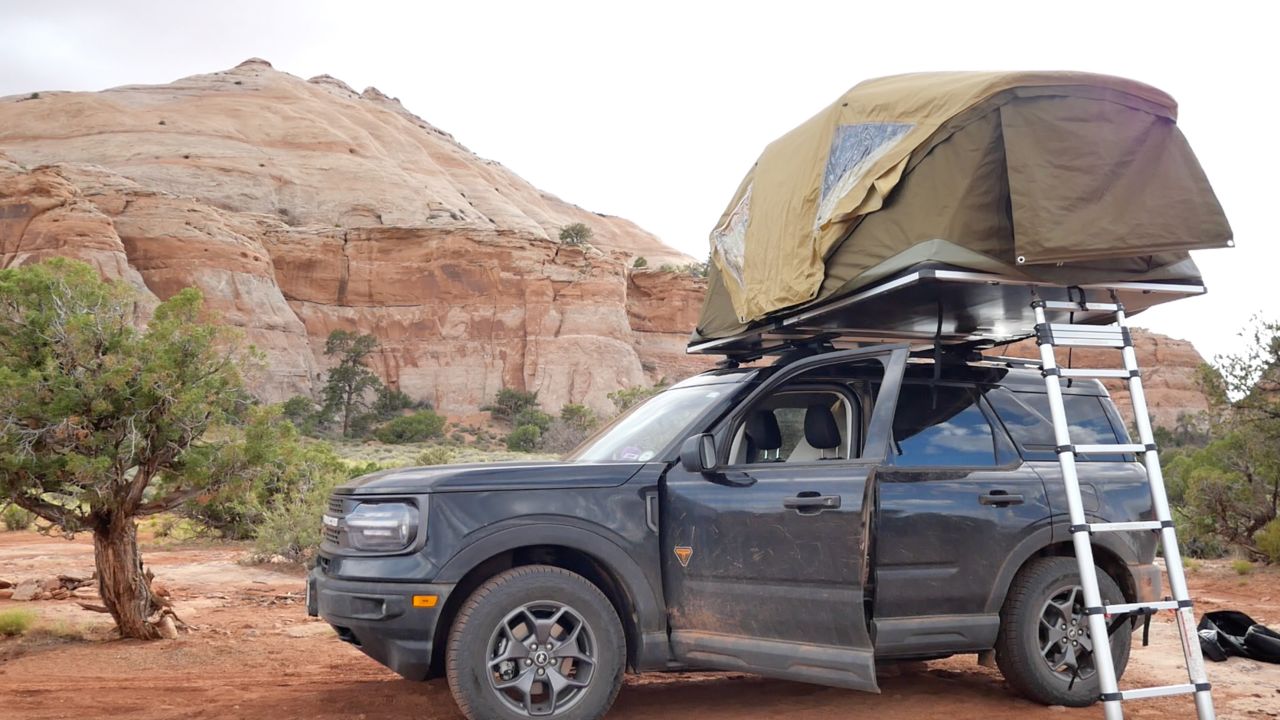
Before we dive too deep into the pros and cons of rooftop tents, it’s important to point out the different types of car-mounted tents. As you’re shopping, you’ll come across both soft-shell and hard-shell rooftop tents.
Soft-shell tents are attractive to many because they have a lower price tag than their hard-shell counterparts (typically $1,000 to $2,500 instead of $3,000 or more). They’re similar in appearance to your typical ground tent and made from a durable, waterproof fabric, and most have an included rainfly for extra protection. Soft-shell tents typically are quite boxy when on top of your car and fold out to create an expanded footprint when you’re getting ready to sleep. This gives you more room to stretch out, however, the higher profile means you can get more noise when driving and more air resistance, which means lower gas mileage — especially at highway speeds. Plus, the soft fabric of these tents also means they’re more prone to wind noise when set up, which can be quite annoying in the middle of the night.

Hard-shell tents, on the other hand, have a hard, outer material, normally made of fiberglass, plastic or aluminum. They have a much lower profile on your roof, which means less noise and better gas mileage. However, they typically don’t fold out into a bigger floorplan, but rather open like a clamshell or straight up like a box. The harder shell also means the tent itself is more protected from the elements while living on top of your car, which can lead to a longer lifespan. Plus, hard-shell tents are much better at staying rigid during windy nights, and since they just pop open, setup times can be blazingly fast (less than one minute). All of these perks come at a price though, and a steep one at that. Hard-shell rooftop tents can easily run you $3,000 or more, which can be a tough pill to swallow compared to soft-shell tents, let alone ground tents.
Why we liked the Thule Approach
After spending six nights in the Thule Approach, I’m really considering keeping it on my roof for good. There are a multitude of reasons for this, but the biggest by a mile is sleep quality. I thought I had my sleep system pretty dialed, with a super comfy and lightweight Big Agnes pad, a plush Nemo sleeping bag, a pillow that actually supported my head and a liner to keep me cozy. But then I slept in the Thule Approach. I kid you not, it was the best sleep I’ve ever had while camping.
The Thule Approach and all other rooftop tents have a built-in mattress that you just can’t compare to an inflatable sleeping pad. The integrated mattress provided so much more support than a pad and honestly felt nearly as comfortable as sleeping at home. I slept in it for six nights and could have easily slept another six with zero complaints about comfort.
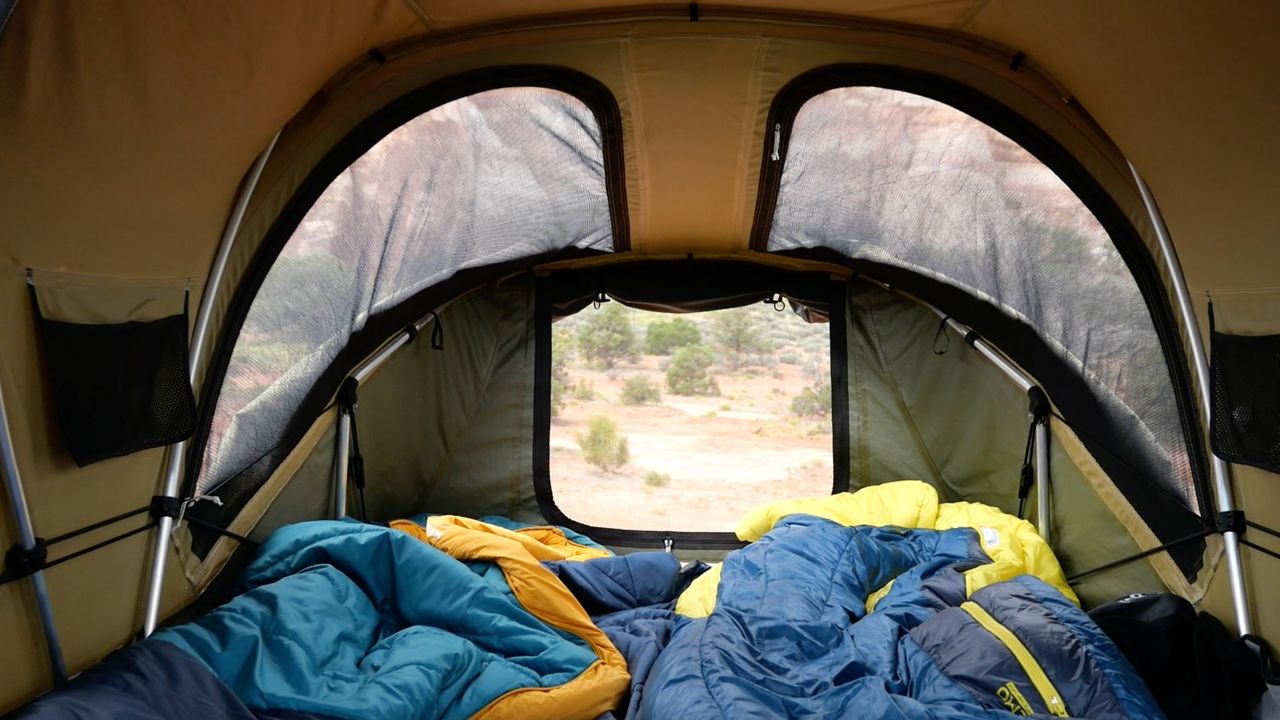
Soft-shell tents are notoriously harder to set up and take down than hard-shell tents, but I still found it quite an easy process. After getting used to the Approach, I was a little doubtful that it was actually faster than a ground tent, so I timed myself setting up my favorite traditional tent that I’ve used for years (stakes and all) and then timed myself setting up the Approach.
Assembling my ground tent took 7 minutes 20 seconds while the rooftop tent only took 2 minutes 25 seconds. Taking down and packing up my traditional tent took 5 minutes 18 seconds and the Approach also took just a bit over 5 minutes. Fiddling with the cover and the zipper might make the process a bit longer every now and then, but the Approach is undeniably quicker to set up and takes about the same amount of time to break down. If I had a hard-shell tent, it would most likely be much faster than both the Approach and the ground tent, as you don’t have to worry about a fabric cover and all you have to do is pop it open.
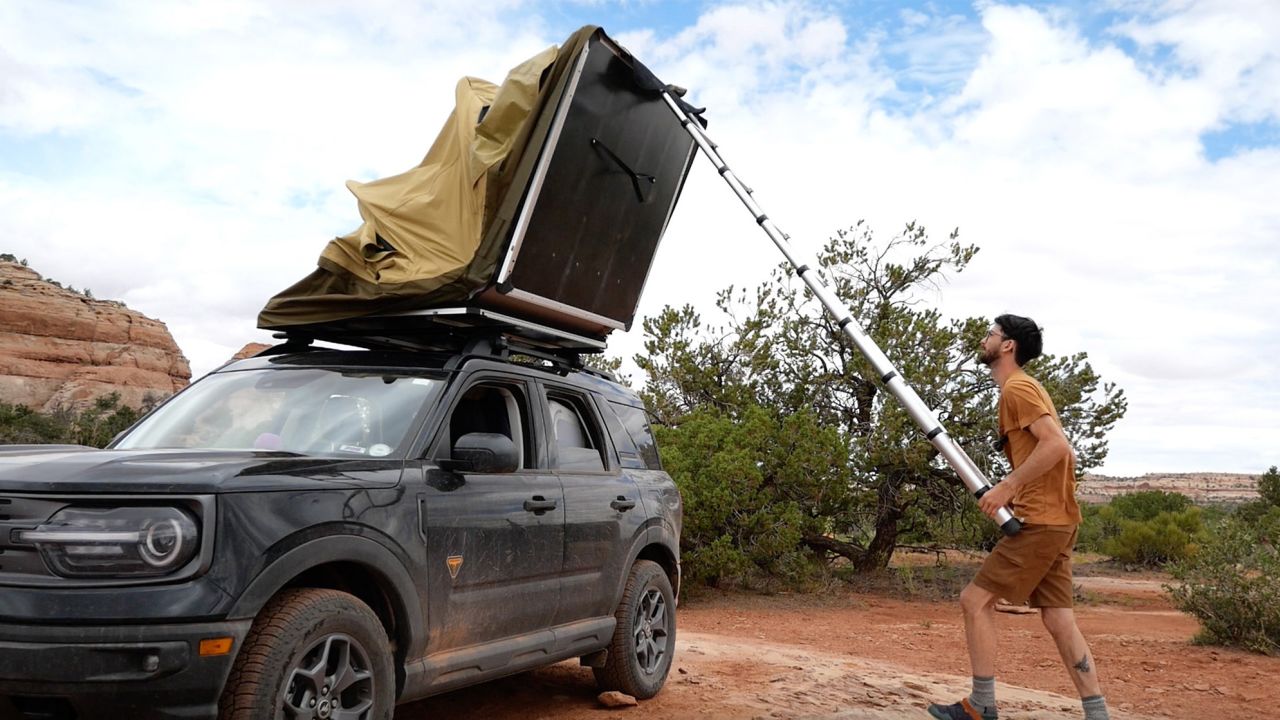
While breaking down the rooftop tent takes longer, one pro over a ground tent is the lack of poles and stakes to deal with. This can save some time and headaches, and if you’re camping in a place with rocky ground where hammering in stakes is impossible — like on the slickrock of Moab — a rooftop tent like the Approach can be a game changer.
I grew up camping and I’m no stranger to sleeping on the ground, so I wasn’t too sure about sleeping six feet in the air. However, after six nights in the rooftop tent, there are some definite pros to being up that high. Not only is it easier to keep dirt and bugs out, but you also get a lot more airflow. During the hot June nights I spent in Moab, the summer breeze flowing through the Approach was amazing. However, if that breeze had turned into a strong wind and the tent started flapping around, I’m sure I would’ve been wishing I was back on the ground. Plus, the Approach has mesh windows perfectly positioned for stargazing, which was a real treat in the middle of the desert.

Another thing I loved about the Thule Approach was just how big its interior was. There wasn’t a whole ton of headroom, so you still had to crawl around on the inside, but since it folds out past the roof of your car, there was tons of floor space. I slept in there with my partner and our 45-pound dog, and we could have easily fit one or maybe even two more dogs in there. It’s only wide enough for two people, but there’s tons of room below your feet for gear storage.
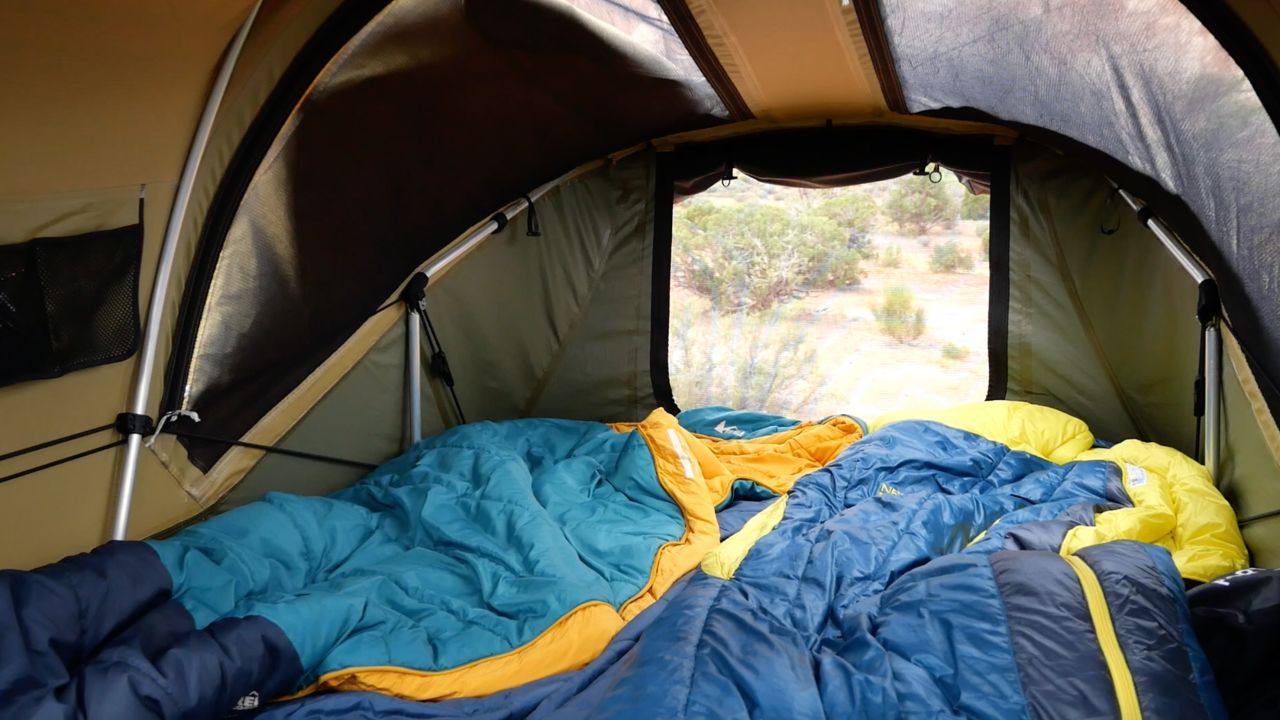
Lastly, this might be a stupid reason to spend thousands of dollars on one piece of outdoor gear, but you can’t deny how cool rooftop tents look. Whether I was racing down a dirt road or parked in the supermarket lot, seeing the Thule Approach on top of my car brought me a lot of joy. I got lots of looks and was asked tons of questions about it, and it was fun talking about my experience and helping others figure out if a rooftop tent could be right for them.
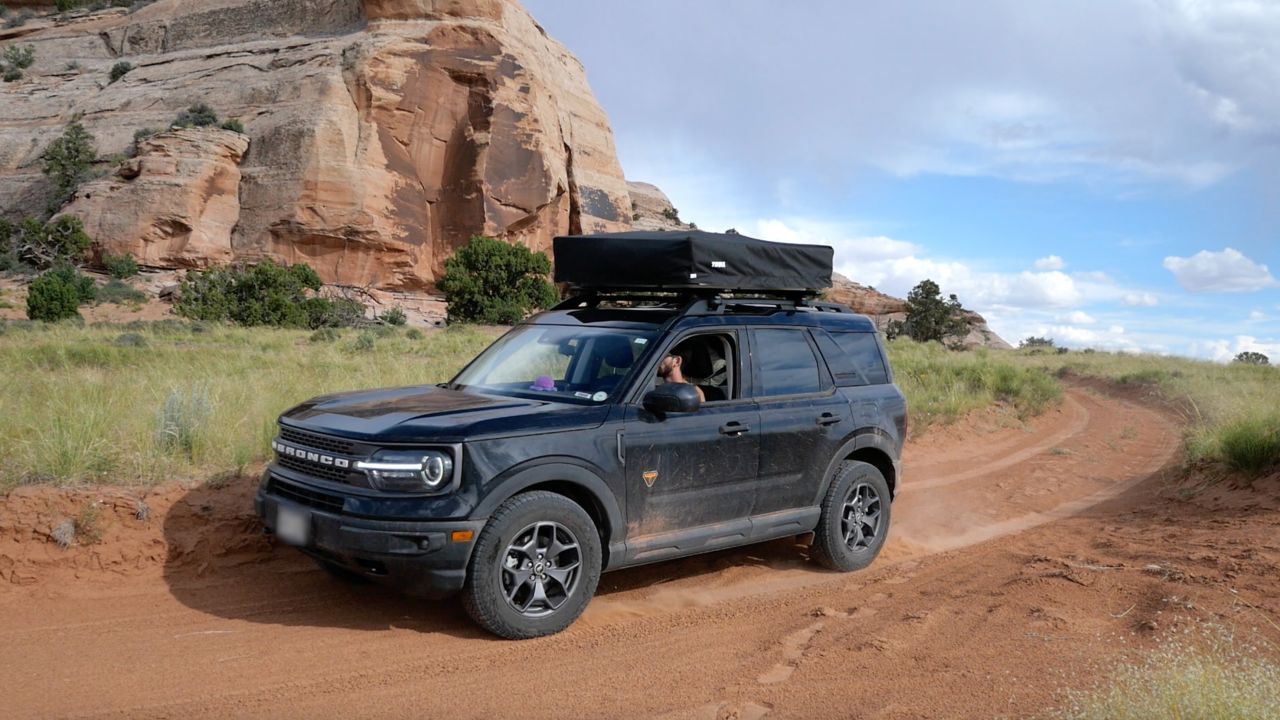
Why we didn’t like the Thule Approach
I love the Thule Approach, but I’ll be clear, it and rooftop tents, in general, are not for everyone. Right off the bat, the prices for these things are exorbitant. They need to be expensive because there’s a lot of engineering and testing that goes into something that will reliably and safely stay on top of your car at 70 miles per hour, but still, $2,500 for a tent is no laughing matter. The Thule Approach M is on the higher end of soft-shell tents, coming in at $2,800, but the brand has a smaller size at $2,300 if you want to save a few hundred bucks. If you buy a rooftop tent like the Approach, you won’t have to use a sleeping pad, but that still doesn’t justify the giant price difference. One of the best and most extravagant tents I’ve ever tested is the REI Co-op Wonderland X, which has a massive vestibule with a removable, four-person tent inside, and at $1,249, it’s still less than half the price of the Thule Approach M.
Related: The REI Co-op Wonderland X is a car camper’s dream tent
If you have the money and want to spend it on a rooftop tent, there are still things to consider before clicking add to cart. First off is the amount of research required to find not only a rooftop tent that you like, but one that actually fits your car, too. My Bronco Sport is on the smaller side of cars that can fit tents, so it was especially tough figuring everything out. You need to make sure you have a way to mount the rooftop tent, so you’ll need to get cross bars which can easily run you $500. You have to find cross bars that not only fit your car but can also support the weight and dimensions of the rooftop tent you want, too. Then you need to research the combined weight of your crossbars and tent and make sure it’s less than the dynamic weight limit of your car. I was in close contact with Thule and used the brand website’s fit guides to figure out which bars I needed for the Approach, and I still had to exchange the crossbars before I got the correct fit.
If you have a larger car that’s more compatible with rooftop tents, the logistics of what you can get on your roof might not be a big deal. If that’s the case, you’ll still want to think about some small details that are inherent to rooftop tent life that you might not love.
First off, it’s kind of obvious, but you can’t go anywhere with the rooftop tent set up. It’s something you’ll come across when researching these tents, but you don’t really get the full grasp of it until you’re taking down and re-setting up your tent multiple times a day. During my trip to Moab, we were driving around seeing the sights and testing our car on the dirt roads, so every morning we’d have to take our bulky items out of the Approach (our sleeping bags were thankfully flat and light enough that we could keep them in there while the tent was closed) and fold everything back up. Then when we got back to camp, we’d unfold the tent again before bed. It doesn’t take that long, but it’s yet another task to add to the never-ending to-do list that’s inherent to camping.
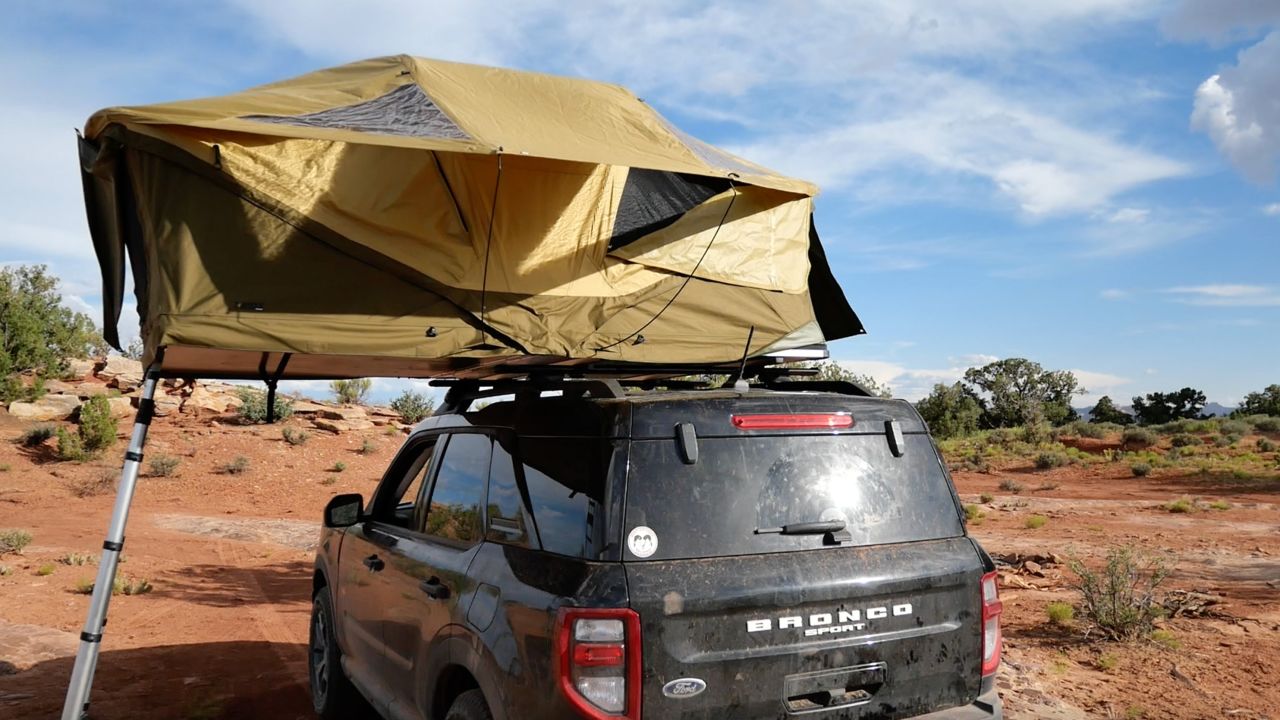
I missed being able to just set up my ground tent and leave it there for the whole duration of the trip, especially since setting up the Approach requires a lot of standing on tires and in door frames. It’s a quick process, but it does require more physical strength and a lot of circling the car to get it completely assembled.
Another thing I didn’t love about the Approach and rooftop tents, in general, was having to haul any gear you wanted in the tent up its ladder. If you’re just bringing a water bottle and a book up each night, this isn’t too troublesome, but I had to scoop up my 45-pound dog and carefully climb up the ladder, which required a fair bit of strength and balance.

The Approach and all other rooftop tents also need your car to be on level ground for a comfortable night’s sleep, and it can be much harder to find a flat spot for your entire car than one for your small ground tent. You can’t walk around your campsite looking for the perfect spot since you’re limited to where you can drive, and while in the backcountry outside of Moab, I ended up driving one of my wheels up on a rock to ensure we were level.
The last con of rooftop tents I want to point out is the hit you take to your gas mileage, though this depends on what kind of tent you have, where and how you’re driving along with many other factors. Since putting the Approach on my car, I’ve lost about 2 miles to 3 miles per gallon whether I’m driving around town or on the highways. It hasn’t been a huge deal for me, but over time, those miles can really add up. I’ll be sure to take the tent off my roof when I know I won’t be using it for a while.
Bottom line
Rooftop tents are undoubtedly cool, and there are tons of reasons to both love and dislike them. I love the Thule Approach M for tons of reasons, but whether you should buy one really comes down to if and how you’ll use it. It’s great if you want a quick tent setup without having to handle any poles or stakes, and you’ll never have a better camping night’s sleep than on the Approach’s thick, comfortable mattress. However, if you don’t like the idea of constantly folding and unfolding your tent throughout the day or driving up onto rocks to create a level surface, the Approach — or any sort of rooftop tent — might be more hassle than it’s worth.

If you’re camping at reservable campgrounds and generally on the beaten path, I really don’t see why you’d need a rooftop tent like the Thule Approach. They look cool, yes, but they’re really best for people who might not know exactly where they’re sleeping each night and want a quick and easy shelter that can be assembled at a moment’s notice. Plus, you could buy multiple high-end ground tents with the money you’d spend on the Approach. If you have the money to spend and comfort is your number one priority, you might be like me and want to sleep in a rooftop tent whenever you can.
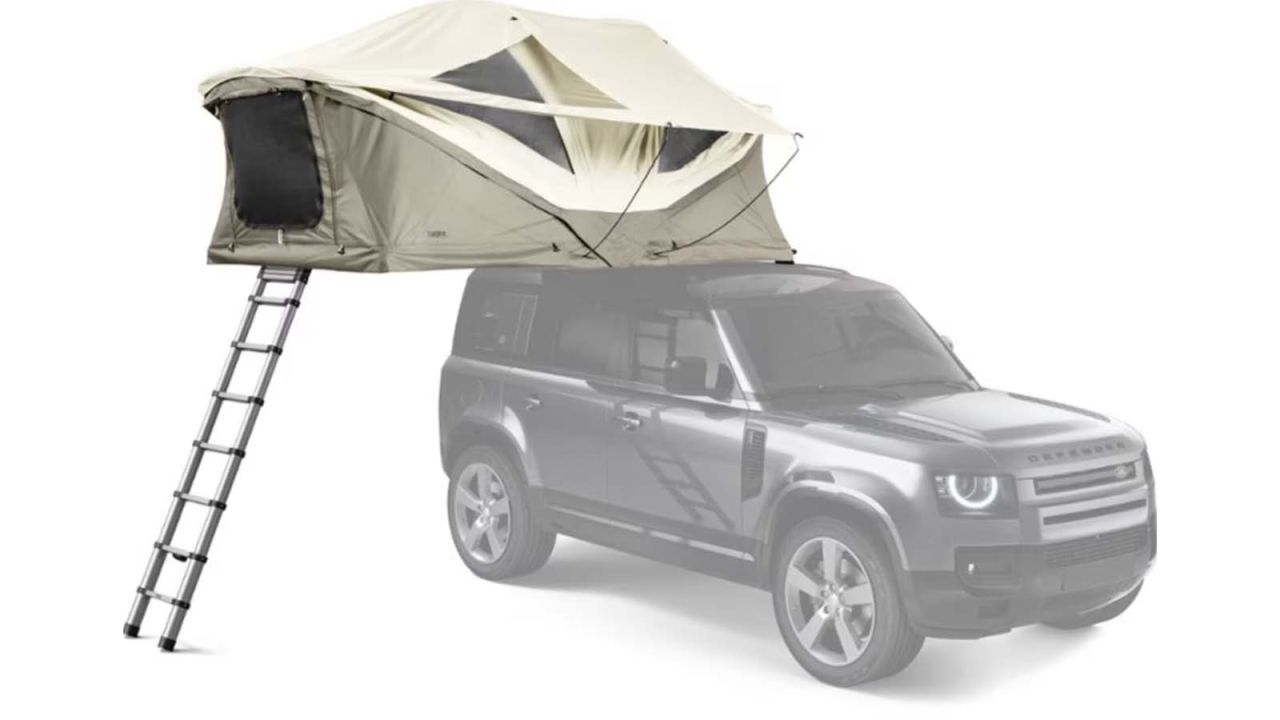



No comments:
Post a Comment